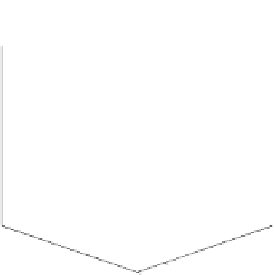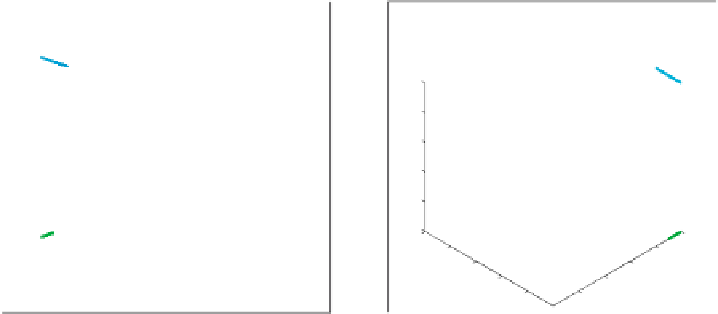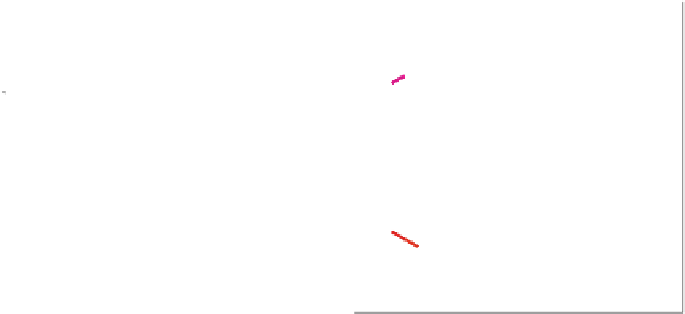Image Processing Reference
In-Depth Information
1
0.9
1
0.8
0.8
0.7
0.6
0.6
0.5
0.4
0.4
0.3
0.2
0.2
0.1
0
0
0
0
1
1
0.2
0.2
0.8
0.8
0.6
0.6
0.4
0.4
0.4
0.4
0.2
0.2
0.6
0.6
Red
Green
0
0
0.8
1
0.8
Green
Red
Fig. 2.7. The same as in Fig. 2.6 except the saturation is now full,
S
=1
cones around the brightness axis instead of cylinders. In Fig. 2.6 and Fig. 2.7 two
such cones, corresponding to
S
=0
.
5 and
S
=1, respectively, are sampled. Second,
on such hexagonal cones, the color curves corresponding to iso-brightness, i.e., when
both saturation and brightness are constant, consist of twisted hexagons i.e., each
such hexagon is a true 3D curve, does not lie in a single plane. The hexagons are
twisted in such a way that the resulting curve is continuous, but the curve zigzags
in 3D, while always being a straight line parallel to the edges of the RGB cube, as
depicted by the figures.
The hue component tells where on the twisted hexagon a color is in analogy with
the angle in cylindrical coordinates. The “zero” value of hue points at red, as does
the value 1, to be contrasted to 2
π
an angle of cylindrical coordinates. The saturation
component S is similar to the radial coordinate, i.e., it represents the “radius” of the
hexagon around the brightness axis. By changing it, we effectively change the size
of the twisted hexagon. The brightness component resembles the height component
of the cylindrical coordinates. Increasing it at the same saturation moves the twisted
hexagon towards the white color, (1
,
1
,
1)
T
in RGB, with the value 1 representing
the intersection of the cone with the three walls of the RGB cube neighboring the
white point.
All human labels for color are reachable by changing the hue variable, whereas
changing the other two variables for a fixed hue does not change the human label for
the sensed color. Decreasing the saturation component amounts to adding more black
color in the minds of artists. A 100% saturated color of a given hue and brightness
is the most vivid color of that hue/brightness combination. Fully saturated colors,
S
=1, appear on any of the three boundary surfaces of the RGB cube (Fig. 2.7). A
0% saturated color is perceived as colorless, i.e., gray, regardless the hue. It is the
result of collapsing the hexagons to the brightness axis. Increasing the brightness
component amounts to adding white in artists' terminology. This has the effect of
making the hue shine.











































































































































































































































































































































































































































































































































































































































































































































































































































































































































































































































































































































































































































































































































































































































